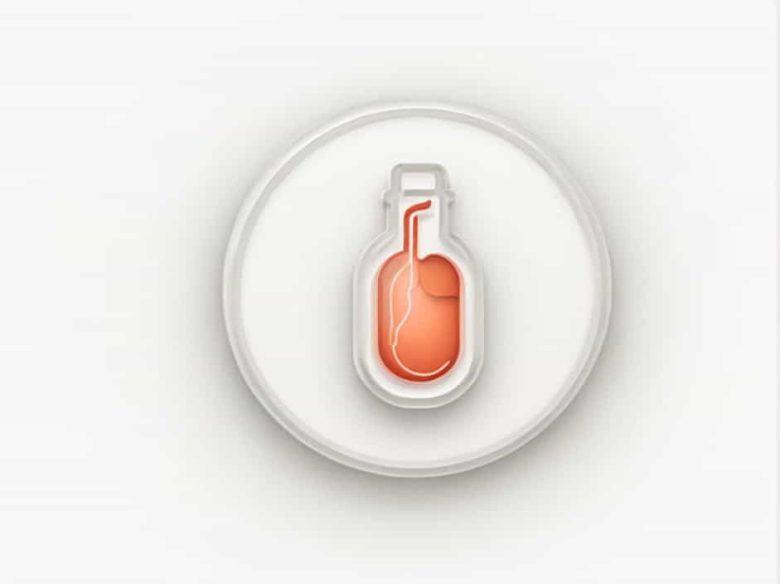The liver is one of the most vital organs in the human body responsible for numerous essential functions including detoxification metabolism and bile production. Among its many roles detoxification is crucial for neutralizing harmful substances such as toxins drugs and metabolic waste.
Within the liver cells (hepatocytes) detoxification primarily takes place in a specialized organelle known as the smooth endoplasmic reticulum (SER). This topic will explore the structure and function of the SER how it detoxifies harmful substances and why liver health is essential for overall well-being.
Understanding the Role of the Liver in Detoxification
The liver acts as the body’s natural filter removing toxins from the bloodstream and breaking them down into harmless byproducts. This process ensures that harmful chemicals do not accumulate in the body and cause damage to organs and tissues.
Liver detoxification occurs in two main stages:
- Phase I Detoxification – Involves enzymatic reactions that modify toxic substances.
- Phase II Detoxification – Converts modified toxins into water-soluble compounds for excretion.
Both phases take place in the smooth endoplasmic reticulum the primary detoxification site in liver cells.
The Smooth Endoplasmic Reticulum: The Detoxification Center of Liver Cells
What is the Smooth Endoplasmic Reticulum (SER)?
The endoplasmic reticulum (ER) is a network of interconnected tubules and sacs within the cell. It has two main types:
- Rough Endoplasmic Reticulum (RER) – Studded with ribosomes and involved in protein synthesis.
- Smooth Endoplasmic Reticulum (SER) – Lacks ribosomes and specializes in lipid metabolism and detoxification.
In liver cells the SER is highly developed and plays a crucial role in breaking down harmful substances.
How the Smooth Endoplasmic Reticulum Detoxifies Toxins
The SER contains enzymes including cytochrome P450 that facilitate detoxification. The detox process occurs in two phases:
Phase I: Modification of Toxins
- Enzymatic oxidation reduction and hydrolysis modify harmful substances.
- Cytochrome P450 enzymes introduce oxygen to make toxins more reactive.
- This step prepares toxins for further processing in Phase II.
Phase II: Conjugation for Excretion
- Modified toxins are combined with molecules like glucuronic acid or sulfate to become water-soluble.
- These now harmless substances are excreted through urine (via the kidneys) or bile (via the digestive system).
Without the SER the liver would struggle to process toxins leading to toxic accumulation and liver damage.
Key Substances Detoxified by the Liver
The liver detoxifies a variety of substances including:
1. Alcohol and Drugs
- Alcohol is converted into acetaldehyde and further broken down into acetic acid.
- Medications such as painkillers antibiotics and sedatives undergo detoxification to prevent toxicity.
2. Metabolic Waste Products
- The breakdown of proteins produces ammonia which is converted into urea and excreted via urine.
- Bilirubin a byproduct of red blood cell breakdown is processed for elimination.
3. Environmental Toxins
- The liver filters out pollutants pesticides and heavy metals from the bloodstream.
- These toxins are stored temporarily before being neutralized or excreted.
Factors Affecting Liver Detoxification
Several factors can impact the efficiency of liver detoxification:
1. Diet and Nutrition
- A healthy diet rich in antioxidants (fruits vegetables whole grains) supports liver function.
- Excessive consumption of processed foods and sugars burdens the liver slowing detoxification.
2. Hydration
- Water helps flush toxins from the liver and kidneys.
- Dehydration can cause toxin buildup leading to fatigue and other health issues.
3. Alcohol and Drug Use
- Chronic alcohol consumption damages the liver leading to fatty liver disease hepatitis and cirrhosis.
- Overuse of medications especially pain relievers can strain liver detoxification pathways.
4. Exposure to Pollutants
- Air pollution pesticides and heavy metals increase the liver’s detoxification workload.
- Reducing exposure to environmental toxins helps maintain liver health.
5. Genetic Factors
- Some individuals have genetic variations in cytochrome P450 enzymes affecting how they process toxins.
- This can influence medication effectiveness and toxicity risk.
Signs of Poor Liver Detoxification
When the liver is unable to detoxify effectively the body may show various symptoms including:
- Chronic fatigue and low energy levels.
- Digestive issues such as bloating and constipation.
- Skin problems like acne rashes or jaundice.
- Brain fog and difficulty concentrating.
- Unexplained weight gain or difficulty losing weight.
Maintaining liver health is essential for preventing these symptoms and ensuring effective detoxification.
How to Support Liver Detoxification Naturally
1. Eat Liver-Friendly Foods
- Leafy greens cruciferous vegetables (broccoli kale Brussels sprouts) and beets support liver enzymes.
- Turmeric garlic and green tea contain antioxidants that enhance detoxification.
2. Stay Hydrated
- Drinking enough water helps flush toxins from the body.
- Herbal teas and fresh juices can also aid detoxification.
3. Reduce Alcohol and Processed Foods
- Limit alcohol intake to avoid overloading liver detox pathways.
- Avoid excessive sugar fried foods and artificial additives.
4. Exercise Regularly
- Physical activity enhances circulation and promotes toxin removal through sweat.
- Strength training and cardiovascular exercises improve metabolism.
5. Get Enough Sleep
- The liver works hardest at night to detoxify the body.
- Quality sleep supports the body’s natural repair processes.
Liver Diseases Related to Poor Detoxification
If the liver is unable to detoxify effectively it may lead to several serious conditions:
1. Fatty Liver Disease
- Caused by excessive fat accumulation in liver cells.
- Can be alcoholic (AFLD) or non-alcoholic (NAFLD).
2. Hepatitis
- Inflammation of the liver caused by viral infections alcohol or toxins.
- Can lead to liver failure if untreated.
3. Cirrhosis
- Permanent scarring of liver tissue reducing detoxification ability.
- Often caused by long-term alcohol abuse or chronic hepatitis.
4. Liver Cancer
- Long-term exposure to toxins increases the risk of liver tumors.
- Regular liver function tests help with early detection.
The smooth endoplasmic reticulum (SER) in liver cells plays a crucial role in detoxification ensuring harmful substances are broken down and safely eliminated. Through enzymatic reactions the liver filters toxins from the bloodstream processes drugs and alcohol and removes metabolic waste.
To maintain effective liver detoxification a healthy lifestyle proper nutrition and avoiding excessive alcohol and toxins are essential. By taking care of your liver you support your body’s natural ability to cleanse itself and promote overall well-being.



